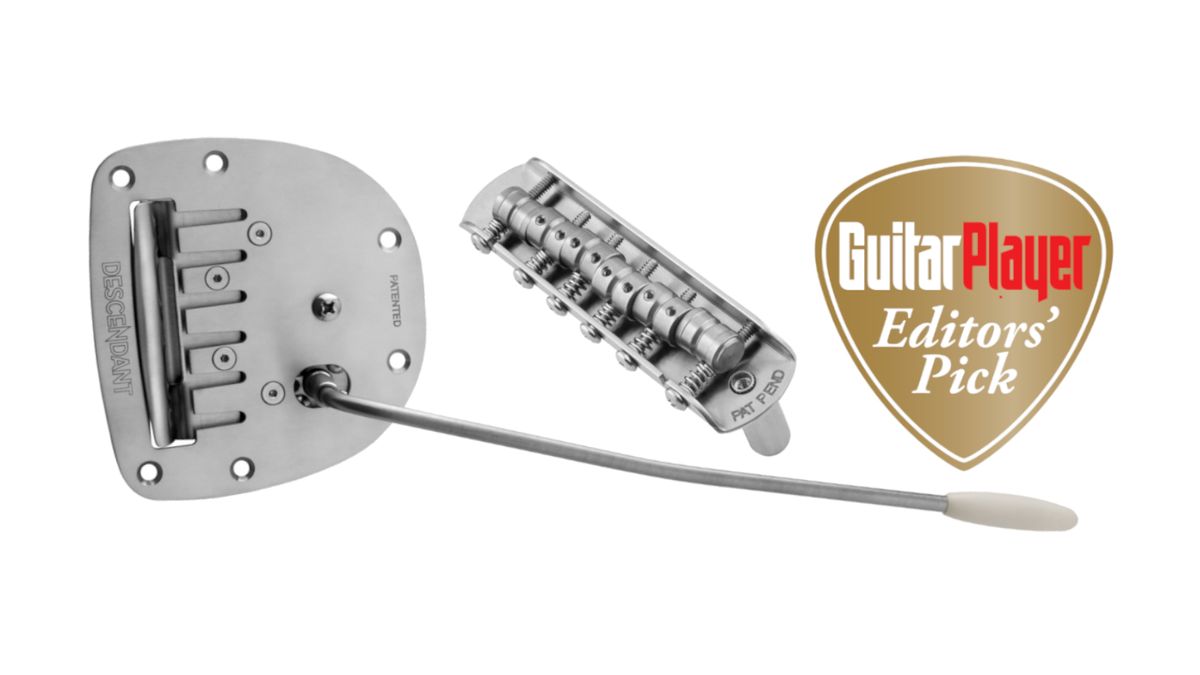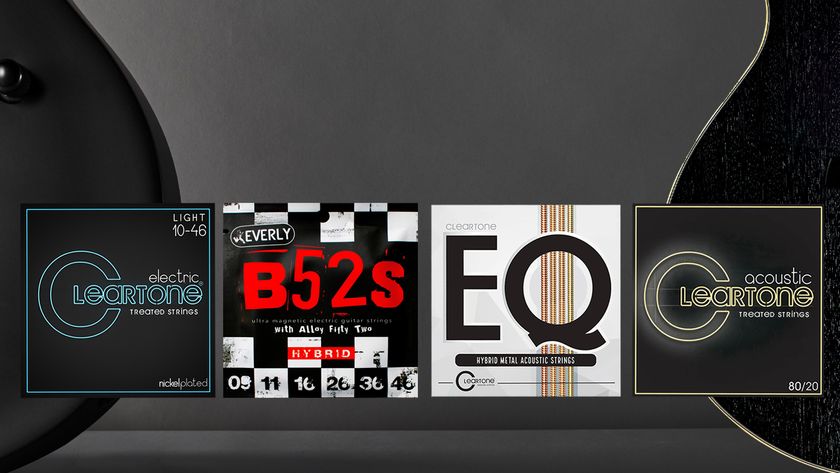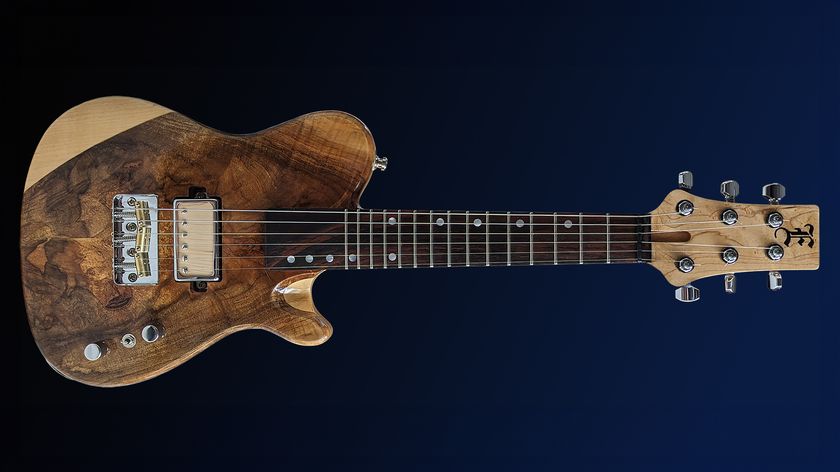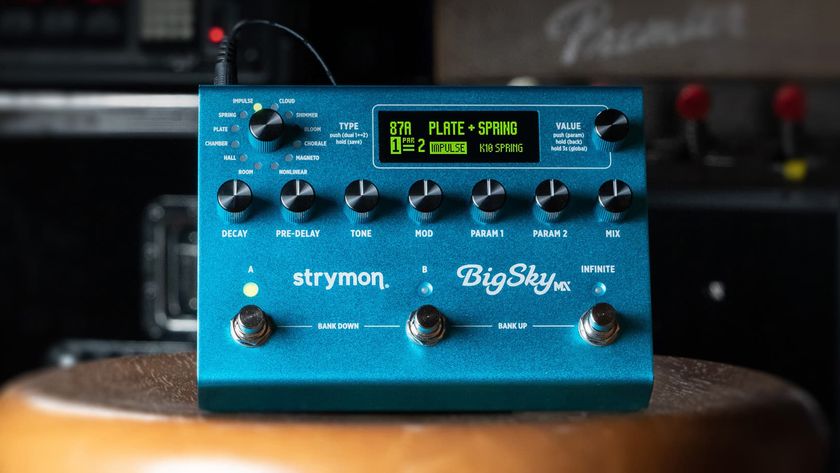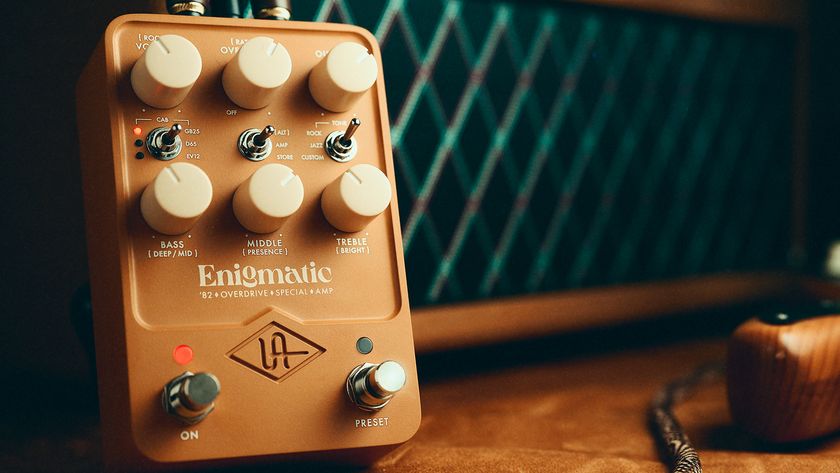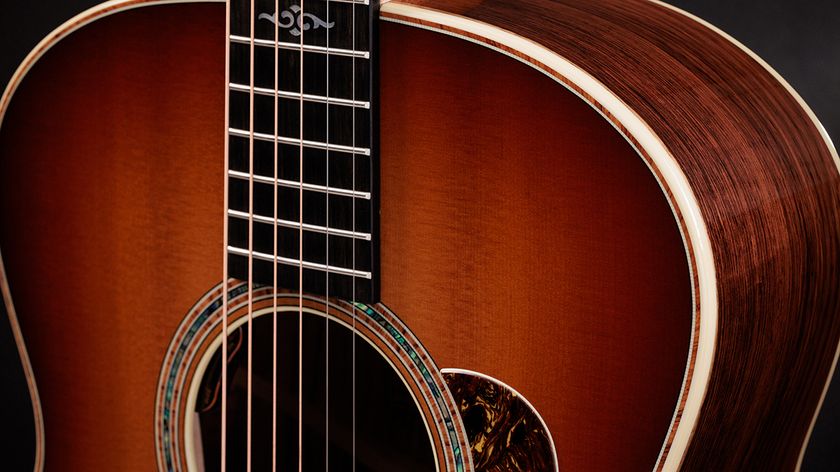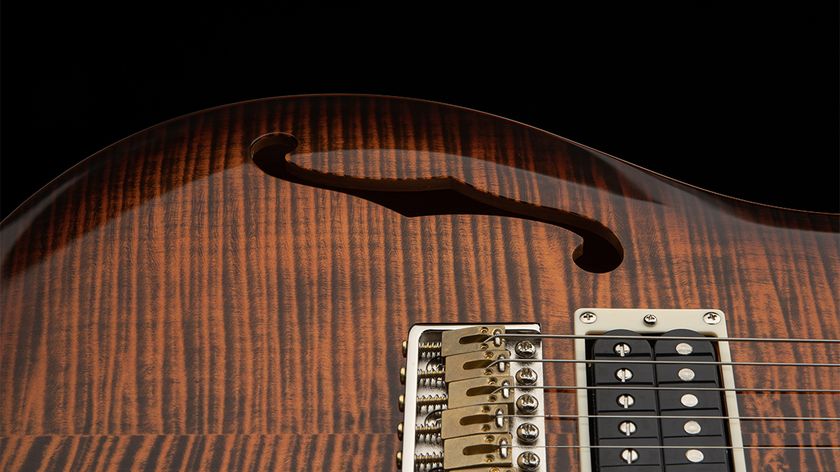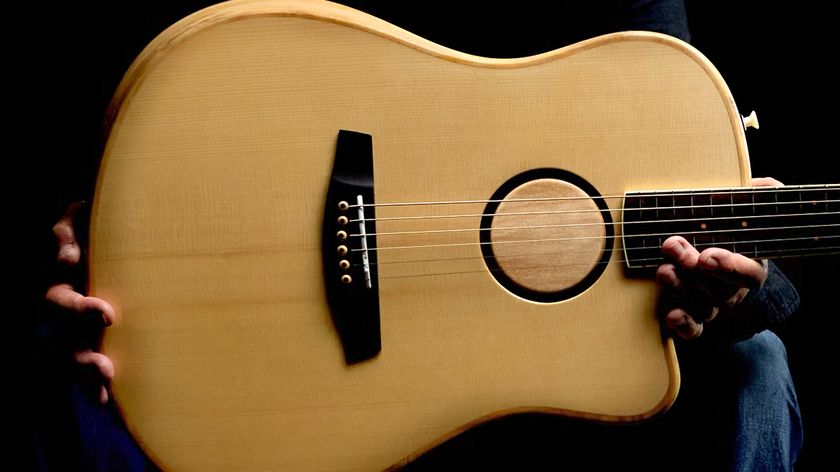GuitarPlayer Verdict
Impressively designed, the Descendant and Companion cure genuine and longstanding bugbears without any noteworthy drawbacks
Pros
- +
Clever designs that cure many longstanding offset vibrato issues
- +
Very well constructed
Cons
- -
Some players might miss just a bit of that notoriously light, low-sustaining jangle
You can trust Guitar Player.
The myriad quirks of the Jazzmaster and Jaguar vibrato unit and bridge have occasionally frustrated offset players since these classic Fender electric guitars arrived in 1958 and ’62, respectively.
Their main failing lies in the rocking bridge’s general instability and resultant tuning issues, as well as the poor sustain that sometimes results from both this and the low string tension, which is itself caused by the shallow break-angle from the vibrato plate to the bridge saddles.
Enter the Descendant vibrato and Companion bridge by Swope Guitars.


While the bridge is a solid and superbly functional improvement over the original, the patented Descendant vibrato is arguably the cleverest piece of engineering here.
Retro-fits vintage and current Fender Jazzmasters and Jaguars, as well as others made using this hardware
One past solution for the strings’ low break angle was to install a roller-bar between the vibrato and bridge to increase the tension, but that’s a little clunky and arguably overkill.
The ingenious solution from inventor Chris Swope (whose guitars we’ve reviewed in GP) is to lower the spring-loaded vibrato plate further into the unit and mill slots in the base plate to give the strings clearance on their way to the bridge, thus increasing string tension all on its own.
It’s a solidly built and high-quality unit overall, and it retro-fits vintage and current Fender Jazzmasters and Jaguars, as well as others made using this hardware.
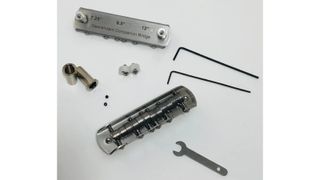
The Companion bridge comes in either a fixed-radius version at 7 ¼, 9 ½ or 12 inches, or a Universal model with height-adjustable saddles.
Vaguely resembling a Mustang bridge (which has often been used as a Jazzmaster and Jaguar “fix” in the past), it has six solid barrel-shaped saddles with grooves for stable string alignment, slots in the back wall for string clearance, and screws for the individual intonation of all saddles.
In use, this bridge rocks slightly, but much less than the original. Some basic understanding of guitar-hardware function helps when installing these units, but they were simple enough to fit in place, and Swope provides handy instructions.
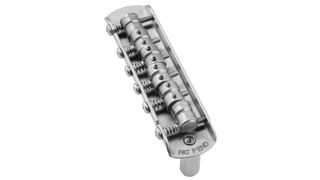
In the process, I also discovered nifty features, such as easy adjustment points for the vibrato’s spring tension and the tightness of the arm’s 360-degree “swing,” along with a clever positioning of the arm that allows its instant removal for casing-up the guitar (with no danger of it falling out in use).
The bridge offers far more adjustability than is immediately apparent, and includes optional flanges to lock the saddles tightly side to side to eliminate any rattles (which I never heard).
I tested the set loaded into a Fender American Vintage ’65 Reissue Jazzmaster in place of the vintage-spec original units and was immediately taken with how well the Descendant and Companion achieved their design goals.
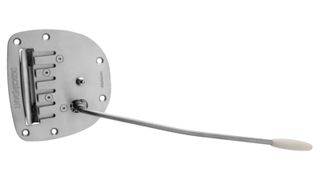
Played unplugged, the guitar showed a distinct improvement in resonance and sustain, which translated to a little more depth and girth when it was plugged into a series of test amps.
While original-spec offset hardware can give decent tuning stability when set up right, I also found a noteworthy improvement in this department, making the Swope set an impressive design achievement all in all, and a worthy Editors’ Pick Award winner.
Offset players who really thrive on the light, airy, slightly zingy metallic jangle might miss a hair of that, but these guitars are plenty jangly by nature, and the Descendant and Companion cure genuine and longstanding bugbears without any noteworthy drawbacks.
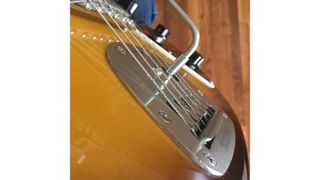
Visit Swope Guitars for more information.
Dave Hunter is a writer and consulting editor for Guitar Player magazine. His prolific output as author includes Fender 75 Years, The Guitar Amp Handbook, The British Amp Invasion, Ultimate Star Guitars, Guitar Effects Pedals, The Guitar Pickup Handbook, The Fender Telecaster and several other titles. Hunter is a former editor of The Guitar Magazine (UK), and a contributor to Vintage Guitar, Premier Guitar, The Connoisseur and other publications. A contributing essayist to the United States Library of Congress National Recording Preservation Board’s Permanent Archive, he lives in Kittery, ME, with his wife and their two children and fronts the bands A Different Engine and The Stereo Field.

“A good example of how, as artists, you have to blindly move forward with crazy ideas”: The story of Joe Satriani’s showstopping Crystal Planet Ibanez JS prototype – which has just sold for $10,000

“I felt myself starting to cry.” Eric Clapton’s 'MTV Unplugged' Martin acoustic returns in two guises. But Slowhand’s affinity for the guitar brand began long before that seminal live performance
